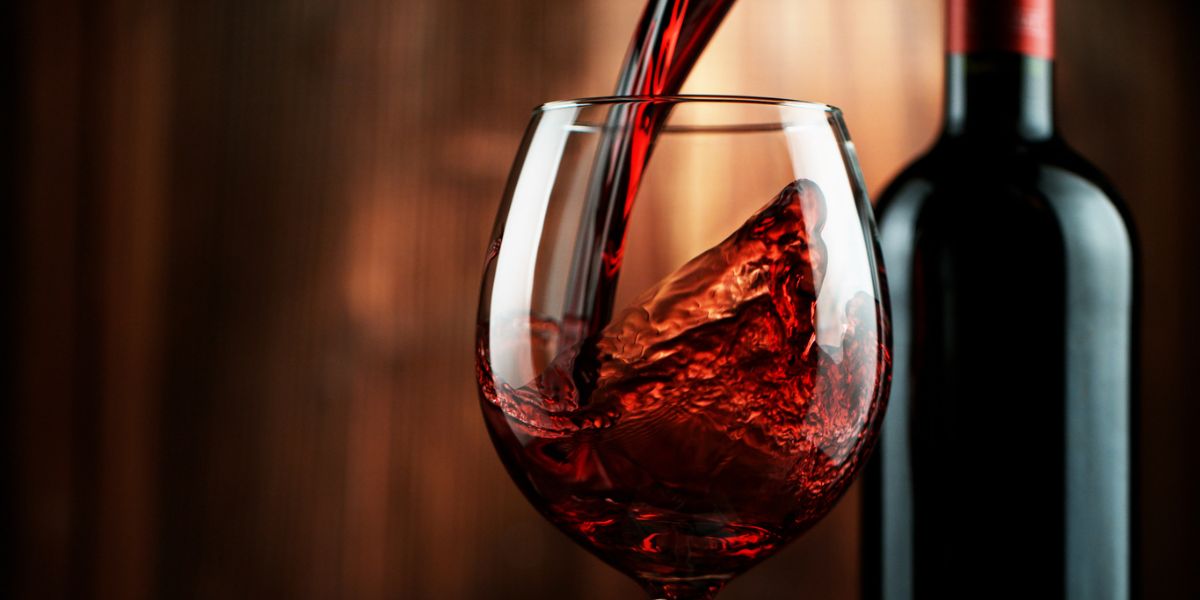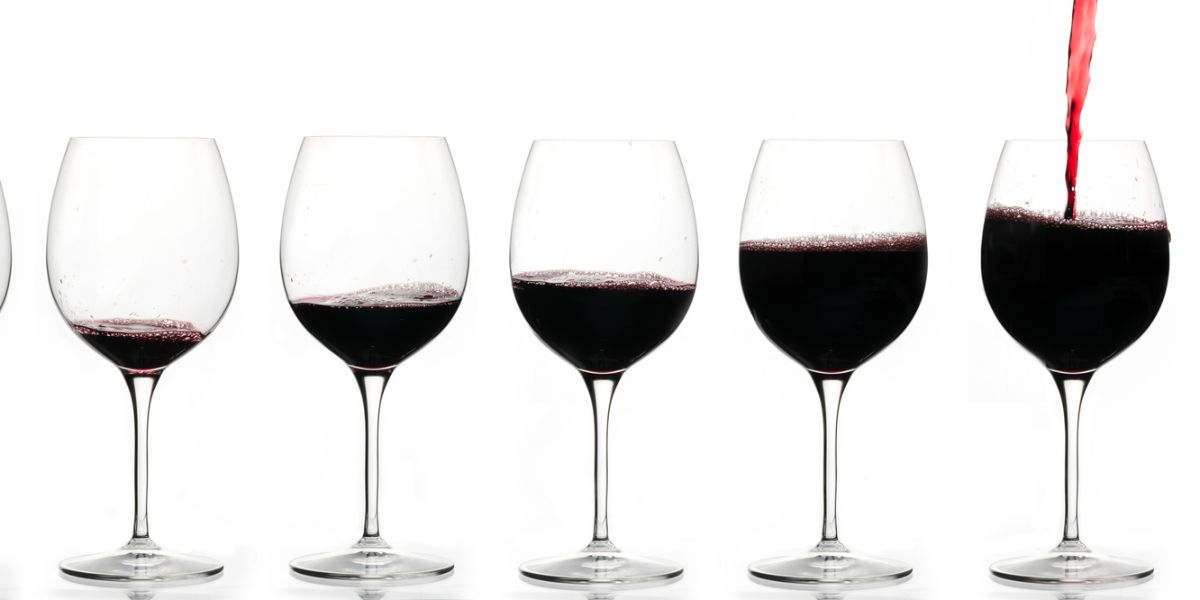What is the difference between light, medium, and heavy red wine?
While there are many different words to describe wine, “body” is perhaps the most unique. The body of wine has nothing to do with the shape of its bottle or the wine itself.

Red Wines from Lightest to Boldest
Instead, it has everything to do with the way the wine feels inside your mouth. It may help to think of it this way. When you drink a glass of water, it doesn’t stick to the inside of your mouth. Instead, it flows quickly, and once you swallow, there’s no real aftertaste.
Switch to a strawberry milkshake, though, and you’ll find the inside of your mouth is coated with a viscous, thick liquid. After swallowing, you’ll have that residual, pleasant taste in your mouth. That’s what’s meant by “body.”
This same concept applies to wines. Some feel like water inside your mouth. Those tend to be light-bodied wines.
Where does boldness in wine come from?
Others, though, feel vicious and somehow thicker, leaving a lingering flavor on your tongue. Those are full-bodied wines. In between the two are the medium-bodied wines. Generally, a heavy red wine is more likely to be full-bodied.
A medium red wine might be somewhere in the middle. A light white wine is usually a light-bodied wine.
The key factor that contributes to the body of the wine is the level of alcohol. The higher the alcohol content, the higher the viscosity and vice versa.
- Wines with high levels of alcohol will usually feel viscous and feel fuller in the mouth. All wine bottles have the level of alcohol clearly stated on the label.
- Wines that have less than 12.5% alcohol are said to be light-bodied wines. Classic light-bodied wines include Pinot Noir, Gamay, Shiva, Lambrusco, St. Laurent, Riesling, etc
- Wines that have an alcohol level between 12.5% and 13.5% are considered medium-bodied and include Pinot Grigio, Sauvignon blanc, Rose, Cabernet Franc, and French Burgundy.
Wine Alcohol Content
Wines that have an alcohol level of 13.5% are considered full-bodied and include wines like Shiraz, Syrah, Zinfandel, Merlot, Cabernet, and Malbec
Overall, the majority of full-bodied wines are red wines but some white wines that are full-bodied include Chardonnay, Chenin Blanc, Rhones Whites, and White Rioja to name a few.
Heavy red wines tend to be best consumed in small amounts and paired with rich foods like steak, meats cooked in a sweet marinade or sauce, or coated with a spicy crust.
Understanding the difference between light, medium, and heavy wines is vital as you prepare to make your next purchase so you can enjoy it with the ideal pairing.
PACIFIC RIM AND COMPANY is located in the Pacific Northwest. Pacific Rim and Company representatives are available to answer your wine questions and offer selections that are sure to please your palette with an online presence.
Is Red Wine Stronger Than White Wine?
As you begin your journey into the world of wine, you might have many questions. One of the most common is whether red wine or white wine is the most powerful.

The strength of the wine doesn’t have anything to do with the color. Instead, it relies on the alcohol content in the wines themselves.
Understanding Alcohol Content
Wine is made from grapes. Some grapes have a higher concentration of sugar than others. The riper the grapes, the higher the sugar content; thus, during the process of fermentation, more of the sugar will be converted into alcohol
To further increase the alcohol content, grapes used to make red wine are usually harvested much later, increasing the amount of sugar.
In the past, grapes for red wine were usually harvested later, and thus wines frequently had a higher concentration of alcohol.
Things have changed somewhat, though. Today, most wine drinkers prefer wines with less alcohol. Thus, today, grapes are harvested earlier to make wine that is more delicate, gentle, and appreciated by a broader segment of the population. Lighter wines also tend to be paired better with a wide range of food.
How Much Alcohol Is In Your Wine?
The alcohol content in wine ranges from as low as 5.5% to a high of 23% ABV. In North America, all wines have a label that states the amount of alcohol. As a result, it’s pretty easy to tell if you’re getting a wine with higher alcohol content.
So, is red wine stronger than white wine? Not really. While red wines, in general, tend to be stronger than whites, there are more than a few exceptions to that rule.
PACIFIC RIM AND COMPANY is located in the Pacific Northwest. Pacific Rim and Company representatives are available to answer your wine questions and offer selections that are sure to please your palette with an online presence.
What is the best pairing with red wine?
Even though some wine experts declare that red wine should always go with red meat and white wine should go with fish, this is not a “law.” Everyone has different tastes and likes, and when it comes to drinking red wine, you can consume it with any foods you like. Certain foods are recommended with a full-bodied red wine pairing because the pairing can better bring out the flavors of the beverage, mask the acidity, and make the food taste a lot better.

WHAT FOODS DO YOU PAIR WITH FULL-BODIED RED WINE?
1. Burgundy is a full-bodied red wine with flavors of dark chocolate and red berries. It tastes great with many classic Italian foods, like pasta, lasagna, vermicelli, meatballs, and so on. These foods can dull the acidity of the wine and bring out the fruity flavors, making the food taste great. Other wines that also go well with Italian food include Malbec, Barolo, and Chanti.
2. Cabernet is another full-bodied red wine often paired with meat dishes like the grilled blue cheeseburger, breaded cutlets, kibbeh, steaks, lamb chops, and grilled, barbecued meats. These foods will reveal the fruity flavors of cabernet and allow you to enjoy each mouthful of the tender meat. Other wines that also go well with meat dishes include Pinot Noir, Gamay, and Zinfandels.
3. Red wine and cheese is an essential combination. If you will be drinking a full-bodied red wine, it is important to select the appropriate cheese because these beverages can easily overpower the flavor of delicate cheese. Therefore, it is important to choose red wine, like cabernet or pinot noir, when consuming fine or soft cheeses, like feta. If you are sipping Cabernet Sauvignon or Port, it goes better with aged or fermented cheeses to balance the taste. Another great wine that goes with most cheeses is Beaujolais.
4. Shiraz is a full-bodied red wine that can leave an acidic taste. But if you combine it with pecan pie, you will have the time of your life. The toasted and nutty combination of the pie with the flavorful wine will allow you to have an excellent finish to your dinner. When you are eating a sweet dessert, you essentially want to have high alcohol and acidity wine. Let’s say you will not go wrong with Merlot, Lambrusco, Dolcetto, and most port wines for a strawberry cheesecake.
5. If you love burgers with sauteed onions, mushrooms, heavy slices of American cheese, and topped with tomatoes, then select Malbec. Both Merlot and Malbec also go well with spicy foods. The fruity flavor of the wines will pair well with the aromatic spices of the burger, making it an enjoyable meal. If the burger contains veggie meat and is light, go with Pinot Noir.
There are many different combinations of full-bodied red wines and food. In the end, it is a matter of personal preference. What do you pair red wine with? In general, full-bodied red wines that have a high concentration of alcohol are often rich in flavors. To balance the taste, order foods heavier in spices and calories so that the acidity can be lowered and the taste can be equalized.
Pacific Rim and Company is located in the Pacific Northwest. With an online presence, Pacific Rim and Company representatives are available to answer your wine questions and offer selections that are sure to please your palette.
What Does Full-Bodied Red Wine Mean?
For individuals who may be new to the world of wines, it is a fascinating industry. It is often replete with difficult-to-understand terminology, using descriptive words such as body, astringent, aroma, appellation, earthy, and so on. But one phrase frequently used to describe wine is the “body of the wine.”

WHAT DOES A FULL-BODIED RED WINE MEAN?
The full-bodied wine meaning reflects the weight or texture of the beverage in your mouth. The body of the wine depends on several factors, including the alcohol content, level of acidity, the amount of sugar, and the type of grapes used.
When you drink a full-bodied wine, the taste is complex, and the flavor will linger in your mouth for some time. For example, when you drink a cola beverage, it tastes sweet, but within a few seconds, the flavor is gone.
On the other hand, if you drink a glass of milk, the beverage is thick, flavorful, viscous, and the taste will linger in your mouth for some time. This reflects the body of the liquid. The same applies to full-bodied wines.
On the other hand, there are also light-bodied wines, which have less viscosity and minimal after-taste. Medium-bodied wines fall in between the two categories. Both red and white wines can be full-bodied, but, in general, there are more full-bodied red wines than white wines.
If you want to select a full-bodied wine but have no idea about their names, go with the color. The darker the color, the bolder the wine. To a large extent, the boldness comes from the grape skin; the thicker the skin, the bolder the wine.
The other key factor that contributing to the wine's body is the alcohol content (Alcohol by Volume - ABV). When the wine has a high alcohol content, it will become viscous and move slowly and feel heavier in the mouth. Overall,wines with an alcohol content of over 13.5% are considered full-bodied wines. Wines between 12.5%-13.5% are medium-bodied, and those less than 12.5% alcohol are considered light. All wines will have a label that will reveal the alcohol content to tell the body status quickly.
Some well-known full-bodied red wines include the following:
1. Cabernet Sauvignon is one of the most well-known red wines. It is a full-bodied wine with high tannins that give it a flavor of pepper and mature rich black currants.
2. Douro red wines from Portugal are often purplish, with flavors ranging from light to dark ripened fruits.
3. Malbec is a French wine known for its deep purplish color and rich blackberry fruity flavors that includes a tinge of acidity.
4. Mourvedre is a wine high in tannins and alcohol. The wine has a combination of earthy and soft red fruity flavors.
5. Nero D’avola is a wine made in Sicily with flavors that range from sweet to peppery.
6. Petite Sirah is deep-colored wine with rich black fruity flavors.
7. Shiraz is a well-liked wine because of its plum, tobacco, pepper, and blackberry flavors.
8. Syrah is made from dark-skinned grapes and the flavors vary from light chocolate to black pepper.
9. Tannat is wine made in Southern France that is high in tannins and one of the fruitier wines. It is often blended with many other wines.
Full-bodied red wines are generally not consumed alone but instead paired with foods like steak, different plates of pasta, pork, or chicken. The combination goes well because these fat-rich foods can cut through the acidic taste and bring out the wine's rich, fruity flavors.
So uncork a bottle of your FAVORITE WINE and explore your possibilities!
Full-Bodied Red Wine Chart: Your Guide To The Perfect Glass of Wine
One of the best ways to get acquainted with red wines is to know the wine chart. The full-bodied wine chart above includes light-bodied, medium-bodied, and old wine examples as well. There are many red wine charts, but they essentially tell the same story, which is outlined below.

Their delicate nature characterizes light wines. They are not viscous, flow like water, tend to be fruity, and have low alcohol content, which is usually less than 12.5%. Some well-known light red wines include Pinot Noir, Gamay, Lambrusco, and Nebbiolo.
Medium-bodied red wines tend to have an alcohol content between 12.5% and 13.5%. They have mild viscosity. Some of the typical medium-bodied wines include Merlot, Sangiovese, Rose, and Barbera.
Full-bodied dark red wines have an alcohol content of over 13.5% and have complex flavors and aromas. They are also much darker in color. Due to the high alcohol content, it is easy to get a little tipsy faster on full-bodied wines. Well-known full-bodied wines include Shiraz, Syrah, Zinfandel, and Malbec.
Old wines are usually from countries that started producing wines centuries ago, like France, Spain, Italy, Portugal, Greece, and Germany. Old wines tend to be older than 25 years. Most old wines have a soft nature but do have an intense acidic taste. Overall, however, the alcohol content tends to be slightly lower. Classic old wines include Burgundy and Barolo.
One of the best ways to learn about dark red wines, and all wines, is by visiting vineyards where tasting events are common.
The more you taste wines, the better you will be able to differentiate them. Pacific Rim and Company arose from a love and passion of Riesling wines. Located in the Pacific Northwest and with an online presence, Pacific Rim and Company representatives are available to answer your wine questions and offer selections that are sure to please your palette.